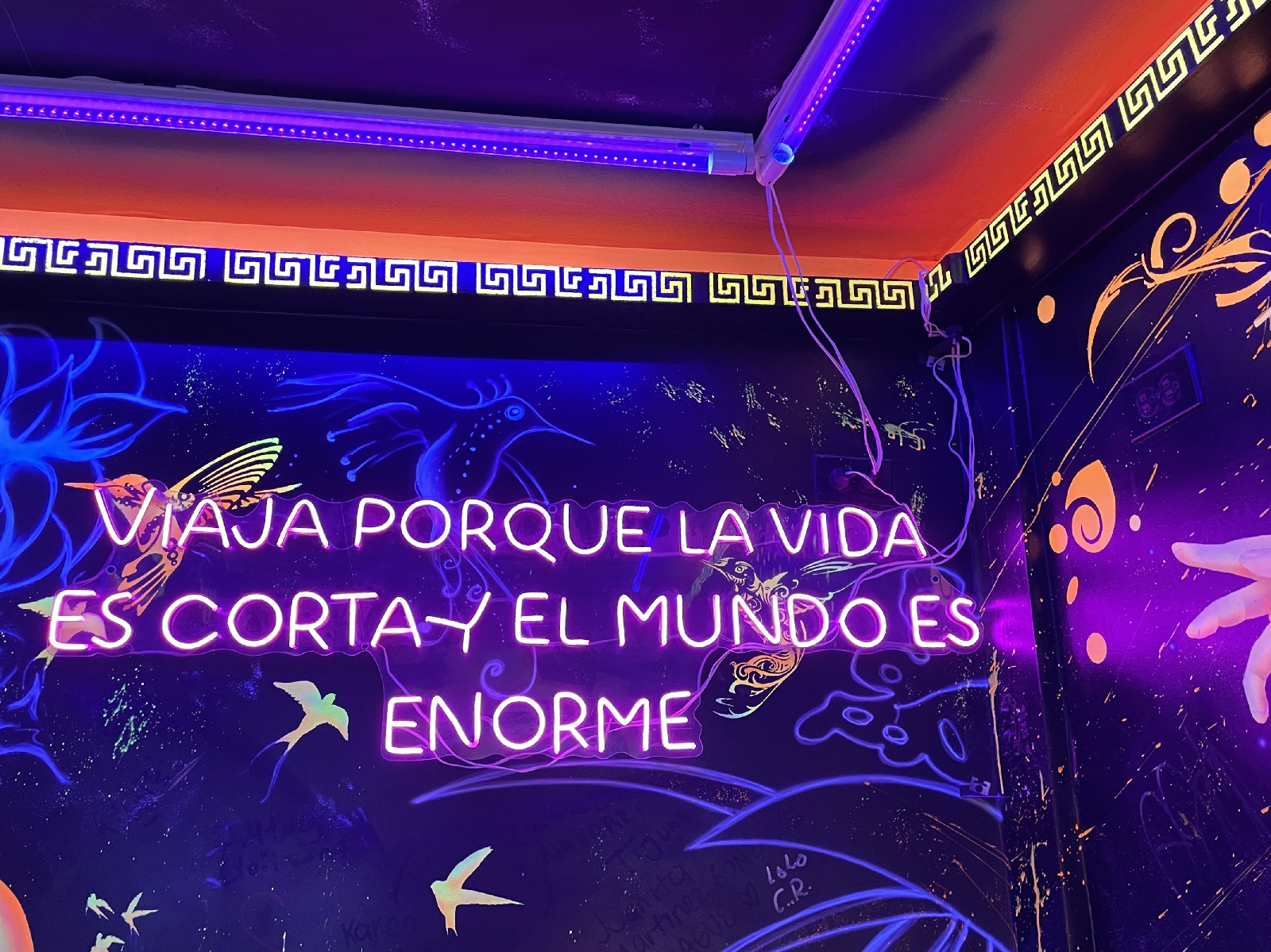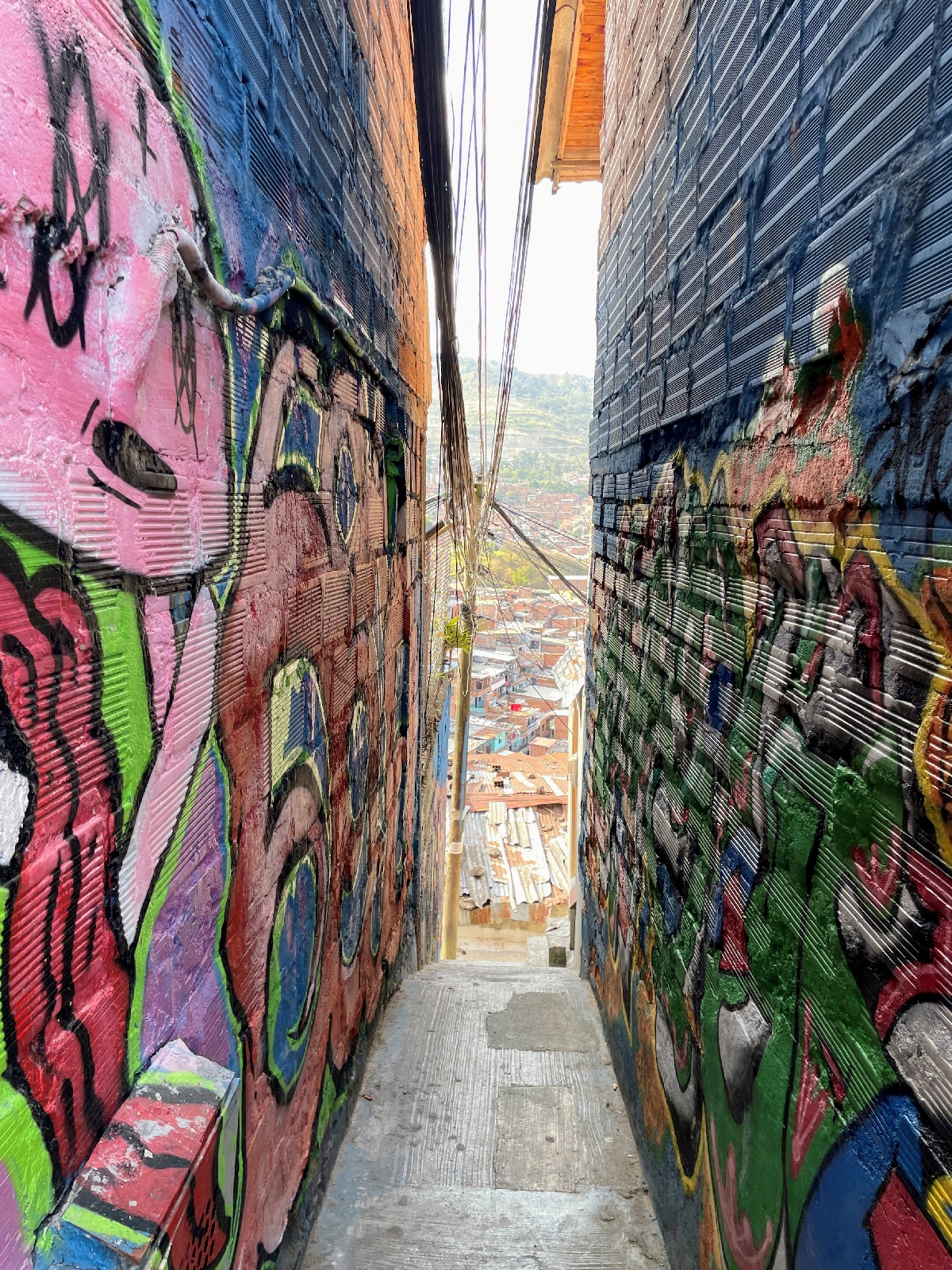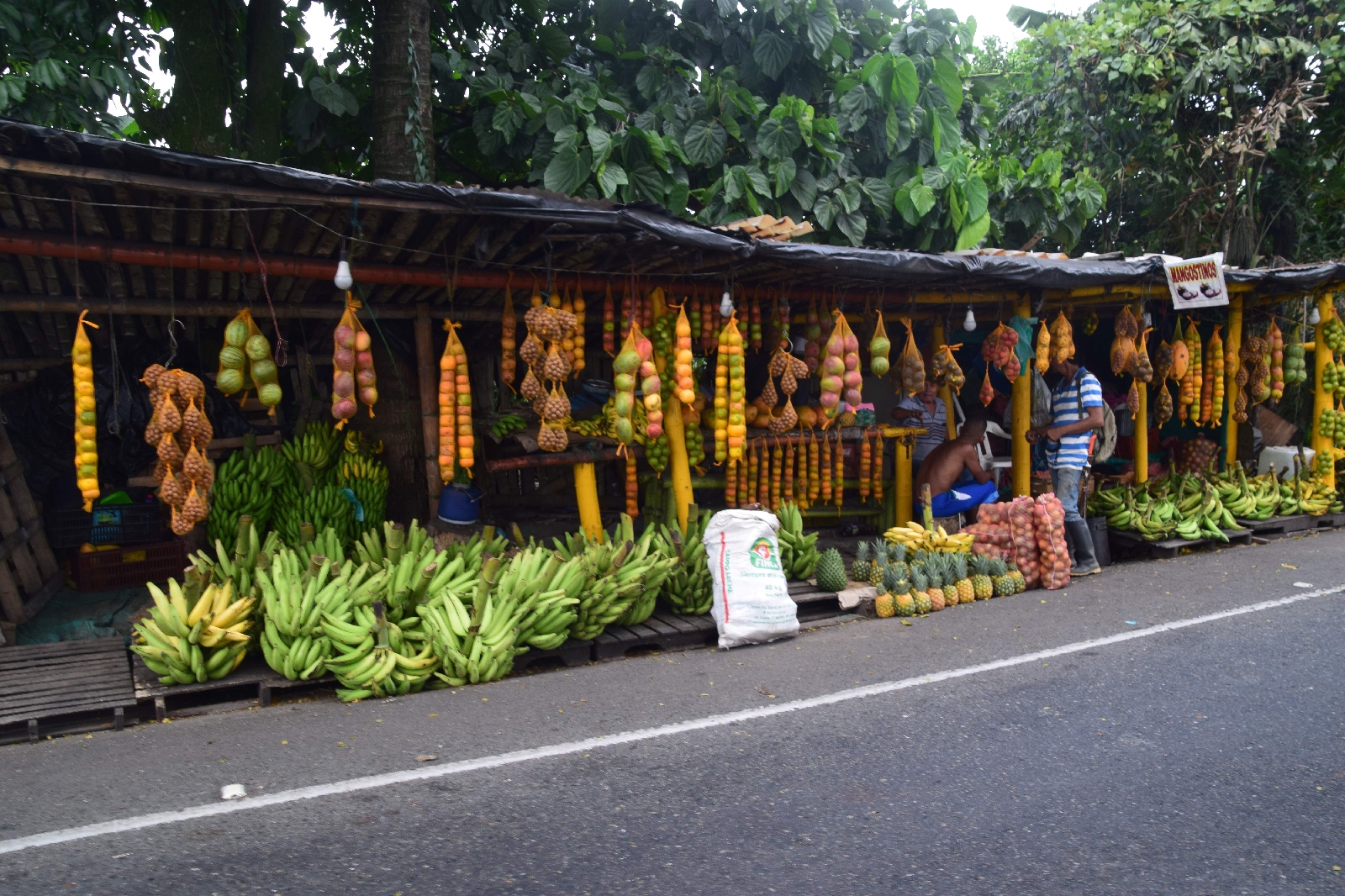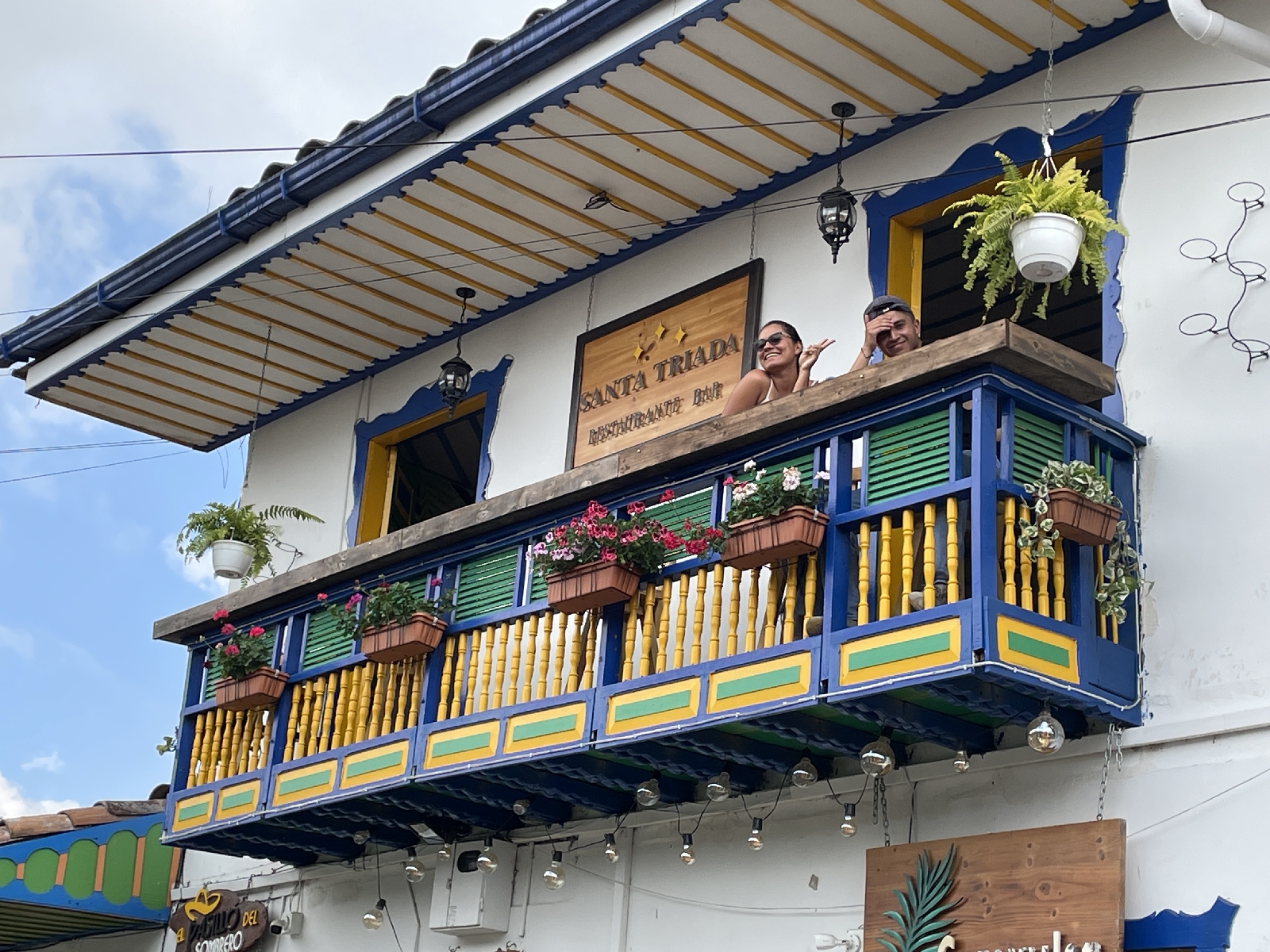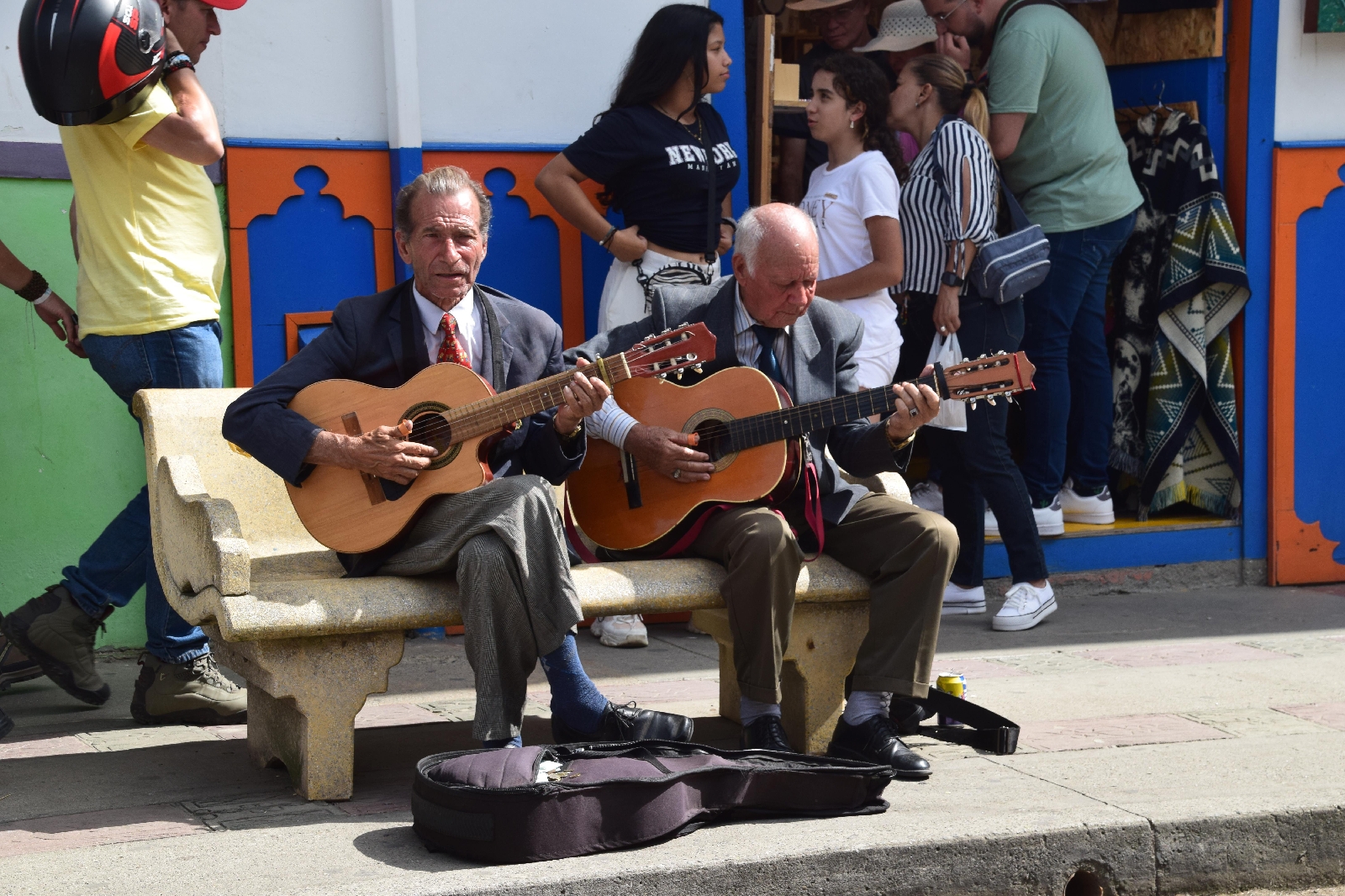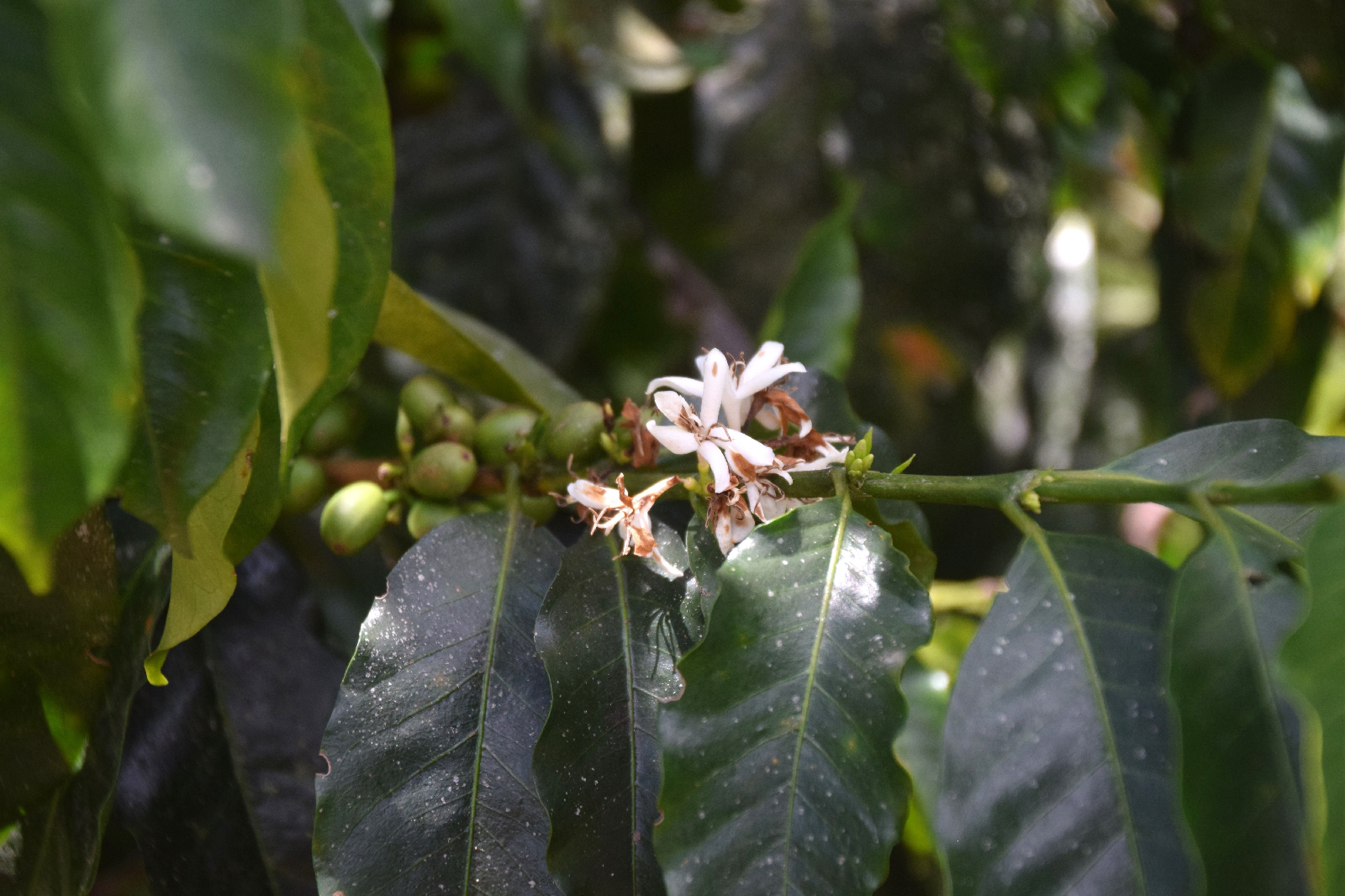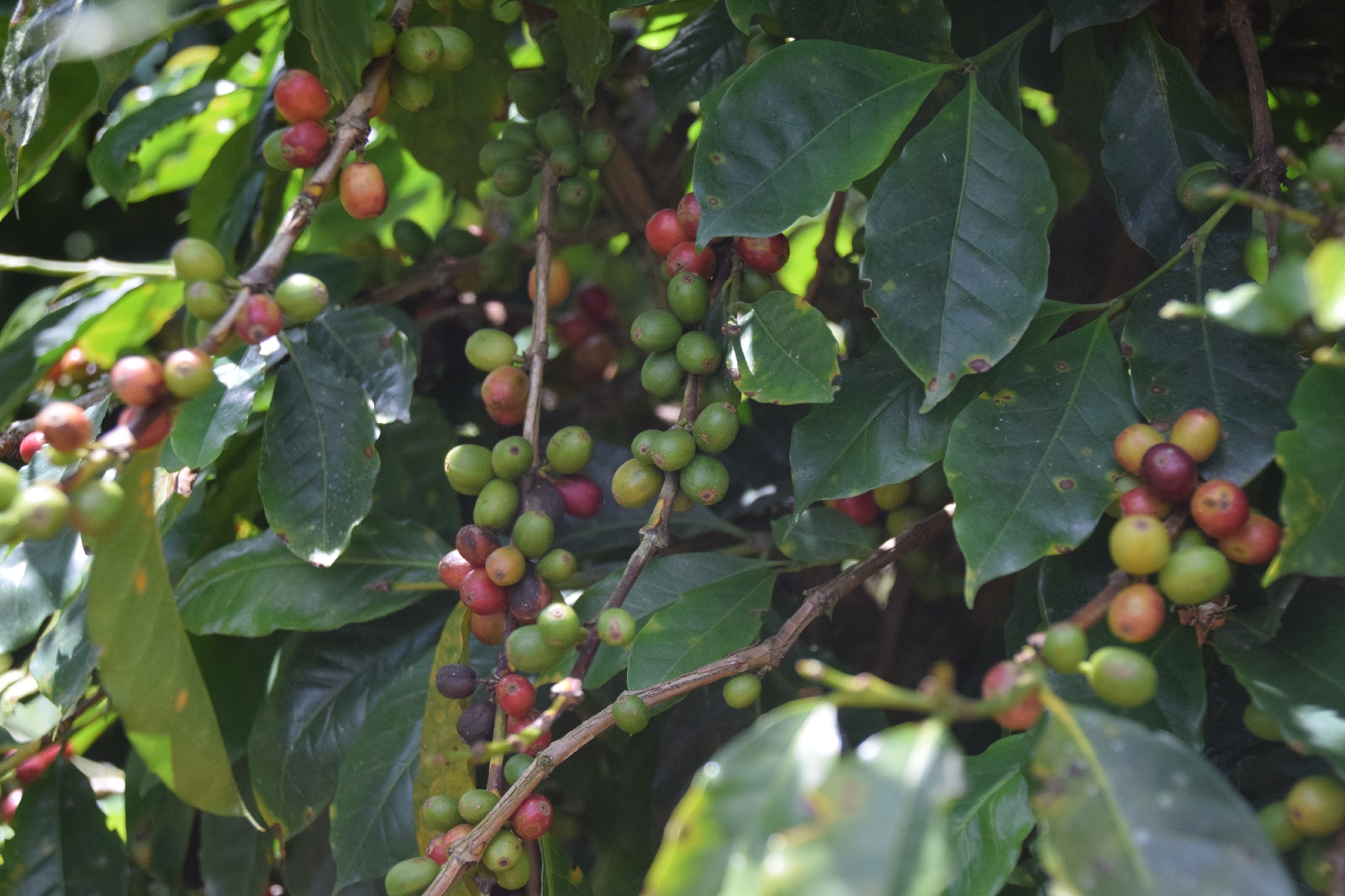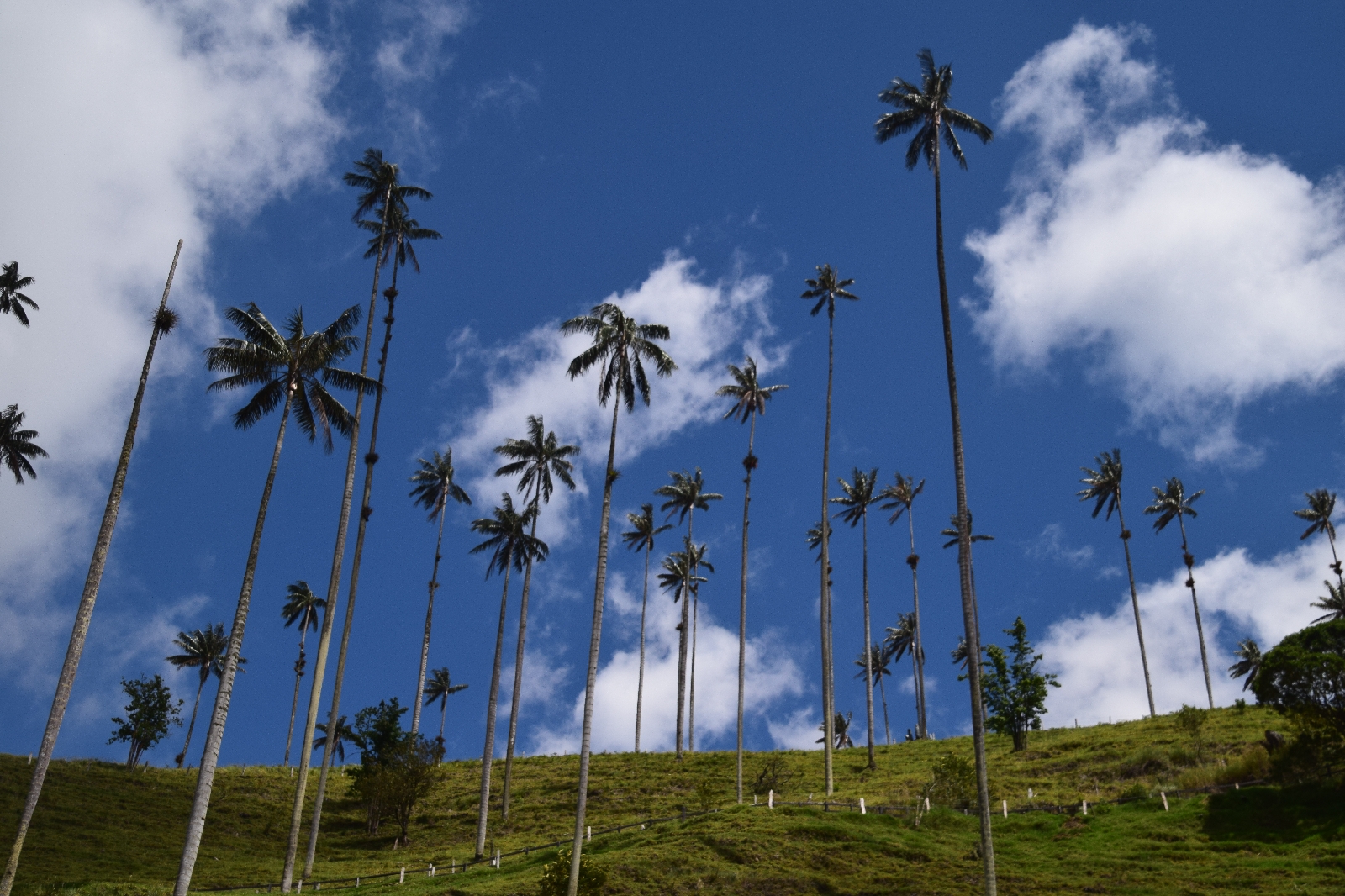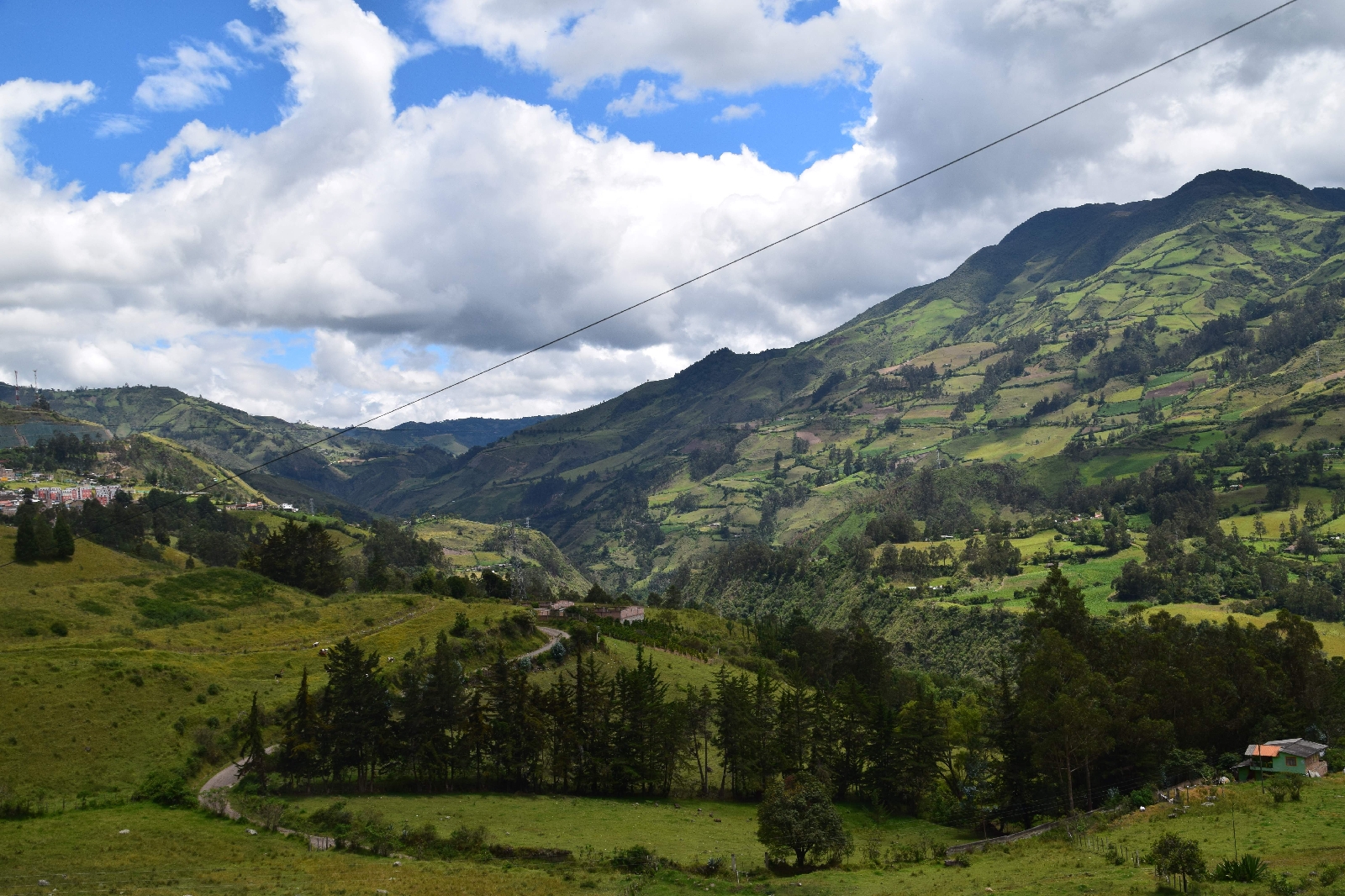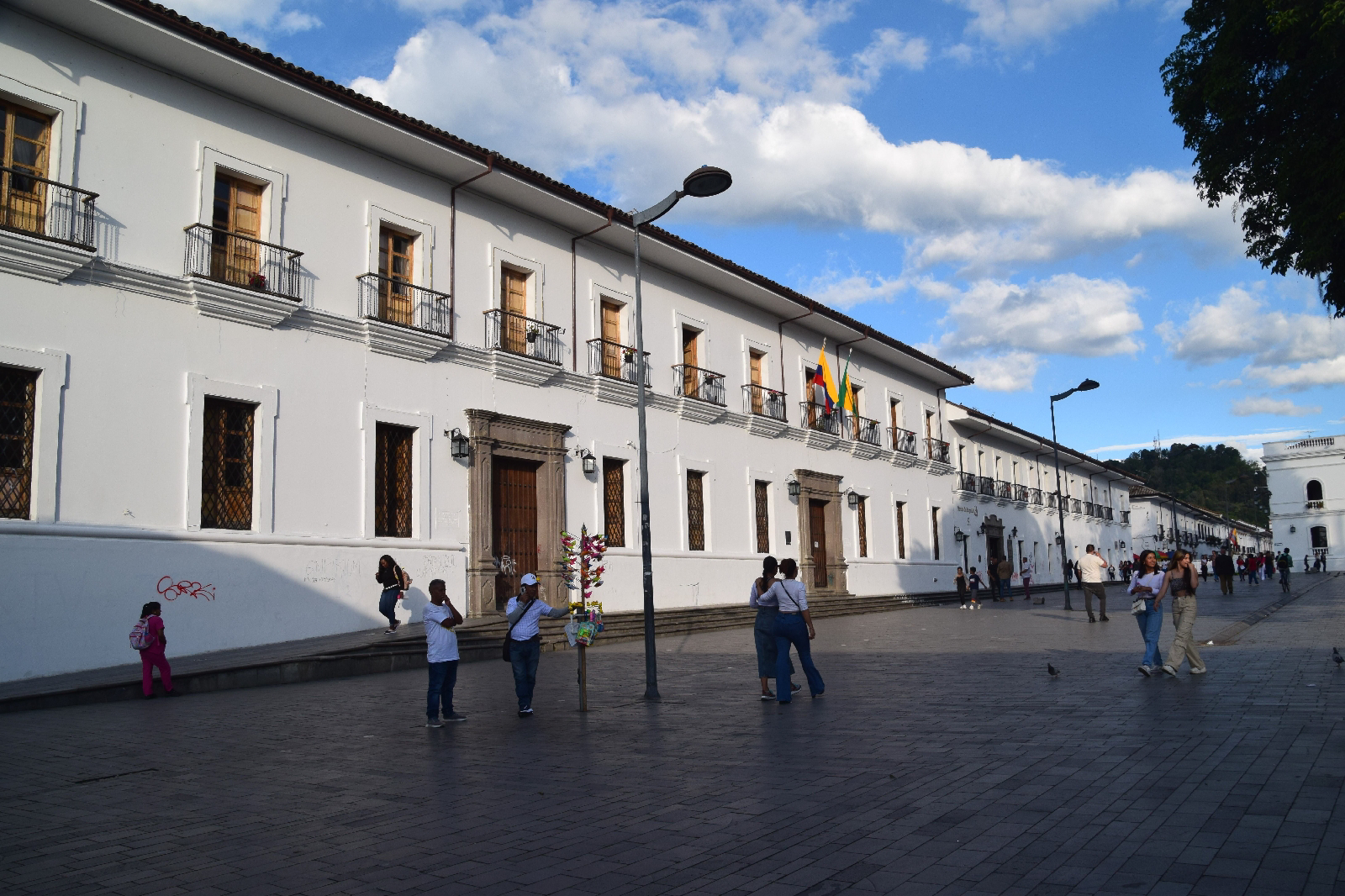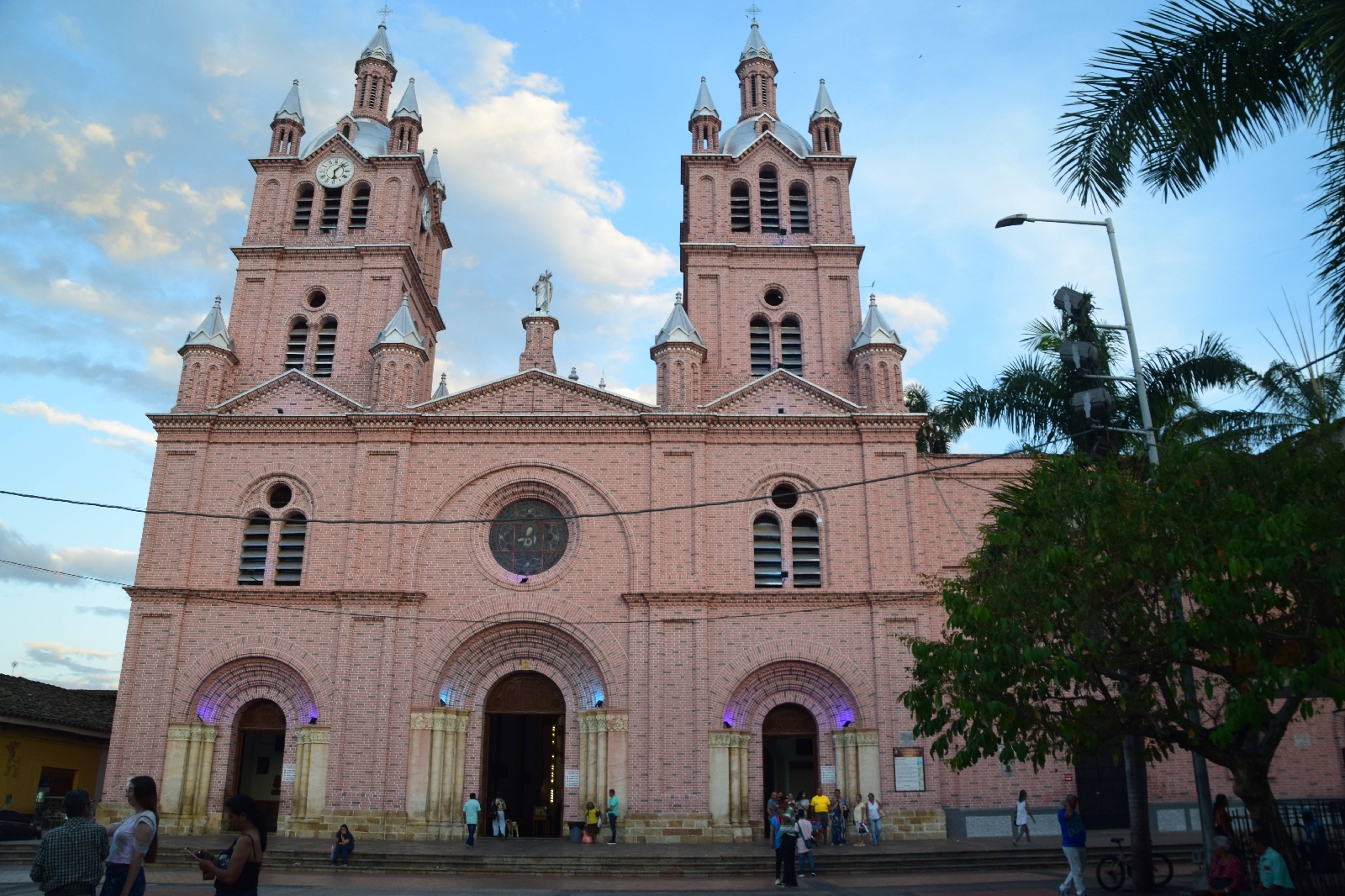When we started to learn Spanish we were told that 'll' didn't phonetically make a sound like 'el', or even 'thl' if you were Welsh, but made a 'y' sound. So Paella was pronounced Pah-eh-yah. Except when we got to Argentina it wasn't. It was now Pah-eh-sha. And in Chile there was a hint of Pah-eh-cha. In Colombia that has evolved to Pah-eh-jah. So Medellin is actually Med-eh-jean and you remember it because Medellin is where jeans came from as they had a big garment/fashion industry.
But of course Medellin is known for other reasons now. It wasn't those other reasons that brought us here; we needed new tyres, brake pads and other things looking at on the bike. This is the last country before Mexico where there is an official Harley dealer and unofficial ones are unlikely to be able to deal with our bike. And it is still a very long way to Mexico.
As is our wont, we went on a walking tour. Medellin is a pretty long drawn out city and there was a walking tour in the area where we were staying - chosen for its proximity to the Harley garage. It was also said to be one of the safest parts of Medellin. But even here we were told both by our accommodation and also by the Harley garage and later on by the walking tour guide as well not to walk back to the accommodation at night, even though it was only fifteen minutes walk from Nightlife Central. But we did.
The area we were staying in, all three of us, is El Poblado. It didn't really exist as much that long ago, but it is now Soho on steroids with extras. It really was a walking tour like no other we have had - note to ourselves, we should do some London ones. The guide said there was a 20th Century church at our meeting point but that was the only mention of an 'important' building in the area. Instead we got a download of the current situation. The cities are effectively controlled by the state, police and military if you like. Areas out in the fertile jungle areas WHERE STUFF GROWS are basically controlled by guerrillas and drug cartels, sometimes the same thing. The cities are therefore pretty much conflict free. This was the same as what we had heard in Popayan. But crime is increasing. Our guide had been mugged twice in the last six months. He showed us a recent stab wound in his arm and he hasn't yet regained complete use of his hand due to the stabbing. He told us that in his view there was only one place to take a taxi in the area as it had video surveillance of passengers getting into cabs - don't flag a cab down. He then talked about tourism and that 90% of tourists in Medellin were single men - as an aside there is Guardian article from about two weeks ago that talks about what has happened to some of them who have used online dating apps here. We then got a spiel about some of the bars offering happy hours and two for the price of one drinks might also have had things added to them. Our guide asked us whether we believed that Colombians had very sweet teeth as there were so many people walking round selling lollipops from trays. There were two prices for the lollipops. If you paid the more expensive price you got a little packet with the lollipop. He told us that in the last year things had been spiralling out of control after a number of years of calmness, as Medellin had started to become used to being a tourist destination.
El Poblado as we said is Soho on steroids. Bars, restaurants, fast food outlets, discos, clubs, sex shops everywhere. Young girls at the doors of them all trying to entice you in. The whole place is noisy, brash and very lively indeed. Our guide also showed us where the bombs had gone off and where innocent civilians had been killed as collateral damage during the drug wars and how this had been a turning point for 'cleaning' up the city. He also showed us the shrines to the Virgin Mary and explained that a lot of the little plaques were for those killed in the fighting; civilians and those from the cartels. He explained how the Metro stations had become safe havens after shrines to the Virgin Mary had been built into them - apparently the cartels didn't shoot in churches. And then there was the cult of Pablo Escobar and how many still respected him for what he had done donation wise for the city, whilst others counted the bodies.
The place is all bright lights. It certainly isn't seedy. The girls wear well the little that they are wearing. You don't get hassled by anyone whilst you are walking around. There is nobody hanging around who looks wasted. However...
One image that sticks in our mind is a group of young girls, late teenagers, all dressed up - not with much - withdrawing money from an ATM. Sat on the floor on sheets of cardboard were women with their babies and toddlers. It's totally unclear to us whether the women were displaced indigenous people or Venezuelan refugees. There are quite a number of them on Calle 10 and the internet suggests they have been there a while - no matter, the babies hadn't been. We don't understand how the basic fundamentals of life play out for the mothers and their children - the babies weren't born on the street were they?
One of the other things you notice as soon as you get 50m away from the bright lights is the smell of any greenery. Human waste smell.
So you have all this going on simultaneously with people splashing over the odds money on cocktails, drugs and beer. And a Harley garage...
We had beers with our guide Santi after the tour. And we accepted free samples. We walked back to the hotel 15minutes from the bright lights at nine thirty at night. And we wondered when the bright lights would be turned off and what happened to the women and their babies?
The following morning we had a follow-up tour in the City Centre with another excellent guide. He mentioned three buildings and the Botero sculptures but then it was back into the issues and how things seemed to be escalating and the risk of them getting out of control. We met in Plaza Botero which is full of Botero sculptures donated by the artist. The donation was dependent on them being in a public square in the centre meant to help civilise the area. The working girls were already at work around the square.
Of the three global cocaine producers Peru and Bolivia's production was static and accounted for 33% of the current market according to the UN. Colombia's was the rest and growing exponentially with the majority being shipped out of Ecuador and ending up in Antwerp, as the growing European market demanded more cocaine. Production currently covers an area the size of Luxembourg. The UN forecast that cocaine will overtake oil and coal next year as Colombia's biggest export. We were taken to the Saturday night dance Plaza where a bomb had gone off killing and maiming innocent people of all ages. Botero donated a sibling bird sculpture for the shattered one in this Plaza - as long as both were displayed side by side. There is another Plaza with light sticks that is meant to be seen as a beacon from the surrounding hills. During the day it is there to represent the victims of the drug wars.
All this comes across as very negative and scary. It's what we were told by locals who had lived through the Colombian troubles and seen their city recreated into something better and different where they weren't afraid. And they were proud of it. But current trends worried them. We were careful but we never felt in danger at any time. There wasn't the massive police presence like in the centre of Buenos Aires. One of the guides even postulated that their might be an unwritten rule not to target tourists as tourists were feeding all aspects of the economies in the city. But the recent sex related crimes were suggesting otherwise.
After two quite heavy and, in a lot of ways, emotional days - including getting a hopefully rejuvenated bike back - we took a day off to visit the strange Piedra at Guatape outside of Medellin. La Piedra is a giant granite monolith outside the very touristy village of Guadape. Guadape had been watching Grayson Perry on TV. The whole area had been flooded to create a massive reservoir feeding a Hydroelectric plant. The plant supplied 5% of Colombia's needs on top of some being exported. The new lake had submerged a small town which was rebuild on higher ground. A cross marked the spot of the old church.
The lake reminded us of Lake Como with some very substantial villas bordering it. Built with money from which sources? Pablo Escobar had one but it was bombed by some of his rivals and has been left as a ruin. Otherwise its footballers and their wives now.
Back to La Piedra. 200m above its new datum level and first climbed in 1956. Now there is a CONCRETE staircase to the top; all 708 steps. Having trained at altitude, we fairly ran up them to the top.
Our last day in Medellin was spent on another walking tour this time of the area called Comuna 13. Comuna 13 is an area of Medellin where a number of military operations were undertaken to cleanse the area of guerrillas. Apparently the military employed some paramilitaries to do the dirty work on a per-head basis and not all the heads were those of guerrillas. There were 4,000 missing people after the last operation back in the early naughties and bones are still being found in nearby disused mine workings. Today the area is a bit of a theme park in our view. A theme park with an edge and an edgy back story. So there is an 'urban' story - hip-hop, rap, break dancing, graffiti, bars, music, cannabis beer, that sort of thing. It doesn't have the veggie food stalls of Camden Lock. Yet. There were no homeless there and no police. It was self-policed by the community...and somebody presumably took a cut somewhere along the line. But we only saw what we were shown. There is more than likely another side if not sides to Comuna 13.
Architecturally it was an incredible place with only narrow alleys separating the buildings and hundreds and hundreds of steps. A recent mayor on a free-beer stance had installed external escalators to help the community. The place was very vibrant and lively but was full of tourists. We wondered what was left when the tourists went to El Poblado in the evening to drink, eat and sleep?
